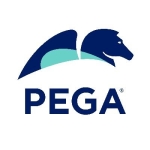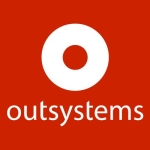What is most valuable?
We initially got on board because it's a single system of record, and we're trying to centralize a lot of different apps. It's enabled us to decommission a number of different systems that we were using such as incident change, problem management, asset management, financial etc. and it's enabled us to pull them all together so now we can develop an entire portal inside of ServiceNow. We just enabled it last month, to bill out catalog items and we have been able to use the financial element to then cross bill all to our lines of business, so it's been huge success for us so far.
How has it helped my organization?
There's are a lot of benefits, and it depends on our audience. In the department I work in, Technology Portfolio Business Management, the biggest benefit was the ability to do asset management in a centralized place and to do the financial elements of that together. I also work with the Infrastructure Team and their key element right now was to centralize incident problem and change and build those functions out of the company. We're now expanding it to another audience which is our global Network Operations Center, and for them the biggest benefit is going to be a centralized dashboard of all their event management. Then we have another infrastructure team that would say the biggest benefit is probably the business process mapping element and the ability when there is an incident to be able to drill down and understand exactly where those problems are in the environment.
What needs improvement?
It's so new to us, everything is shiny and everything works well so it's hard to state that right now. We are pretty much loving everything, especially at Knowledge 16 where we got all kinds of new ideas to expand our footprint in the company. I'd say we don't have a lot of negatives, quite yet. There's a few little limitations that we run into with each of our implementations but they're very minor. Drill down capabilities and reports maybe or I think one of the bigger ones we ran into with our financial management implementation was that there weren't enough layers in the hierarchy to do all the split costing that we were trying to do but we worked through it. We just managed it a different way. Part of it was how we did it beforehand and trying to bring that in versus what ServiceNow says is the best practice, so we're still adapting.
For how long have I used the solution?
We've been using Geneva in-house for about six months.
Buyer's Guide
ServiceNow
September 2025
Learn what your peers think about ServiceNow. Get advice and tips from experienced pros sharing their opinions. Updated: September 2025.
868,787 professionals have used our research since 2012.
What do I think about the stability of the solution?
It's been beautiful. We spun the thing up as soon as we signed the contract. Right away they asked us what they names were. We had development tests and production instances. I can't speak to how fast it was bit to was pretty quick. We've not had any system interruptions whatsoever. It's been available 24/7.
Which solution did I use previously and why did I switch?
We had some homegrown tools, and for incident management itself we had a multi tenant instance with a vendor called Compucon. We shared an instance which wasn't going well, so we brought it in house and then decommissioned our internal apps.
How was the initial setup?
It was incredibly easy. We had the vanilla version and then we used a professional services vendor to kind of help us weed through what was there, to help us understand it, do some initial workflow set up, so it was very simple.
What's my experience with pricing, setup cost, and licensing?
Our current challenge, because it's a little bit of a rub right now is we're going through re-negotiations on contract because absolutely you're going through the big sales pitch, it can do everything at a cost. We were given all of it, and we purchased a small amount and now we're saying, "Oh yeah, we want to do that." Well, more fees for that, more fees for that. So it's been a real challenge to understand what that pricing structure looks like.
That's one thing how they bill off of nodes and CI's and stuff for some of the capabilities and then we've had a challenge with. Getting to a steady state with our IT users, understanding what capabilities they can truly have with the matrix that was provided to us, and then given a sufficient amount of time after go-live to really reconcile and get to a steady state before we go through and re-calibrate the contract to include whatever. So that's an active conversation that's happening right now but we're working with some great people so we're confident we'll get through it.
What other advice do I have?
So far the people we've been working with are great. The system is available all the time, and we have high hopes for the single system of record concept where everything is linked together. We love the user experience concept that we're starting to roll out. That's a huge piece for us as our big disconnect from our business slash end users in IT, the way they communicate, throw things over the fence. We see this as a great opportunity to kind of bridge that gap and kind of bring both players together.
One of the reasons we're moving over financial management in addition to system of record is we use VMWare and we're shutting down for very specifically to that container or that tool. I think we're paying VMware three, four, or five times what we're paying with ServiceNow so, we have a huge desire to get off that in short order plus we're already seeing more features in ServiceNow for value add then what we had in VMWare.
Disclosure: My company does not have a business relationship with this vendor other than being a customer.


















